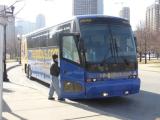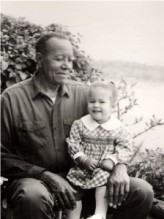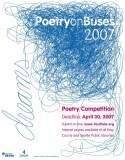A few weeks ago, my employer sponsored Bus to Work Day at Overlake Transit Center. It was a fun Friday distraction, with representation from transit agencies and commute specialists, free food (including chocolate-chip cupcakes!), and a prize drawing. I entered the drawing and then promptly forgot about it–that is, until Wednesday, when I found out that I’d won a brand new, shiny, red folding bicycle.
One of the (many) reasons I rarely ride a bike is because there is no outdoor bike storage where I live. (The hand-me-down mountain bike that Bus Nerd hooked me up with is currently languishing in his office, awaiting a dusting off in time for Bike to Work Day. But I digress.) A folding bike is a perfect solution because I can store it inside–in a closet, or even under the bed.
The bike I won is a Dahon. I don’t know much about bike manufacturers, but so far, I like what I’ve seen on the company’s website:
Dahon was founded with the singular purpose of convincing more people to use environmentally-sustainable forms of transport. To accomplish this goal, we’ve focused on creating innovative but reasonably-priced folding bicycles.
[…]
Dahon is committed to creating green mobility solutions for people who live active, environmentally friendly lifestyles.
I also love the design. It’s compact and fairly simple to open and close.
My new bike, open and ready to ride
Less than a minute later: my new bike, folded and ready to store
Of course, I don’t know how it rides yet, having only tried for a couple of minutes in front of my office on Thursday afternoon, and I’m not sure how well it will work for multi-modal scenarios. When I tried to take it home from work (in its folded state) on Thursday, the 545 driver told me I couldn’t bring it on the bus. I didn’t have time to unfold it, and I wasn’t convinced that, given its small wheels, it would fit on the regular bike rack. Lord knows I wasn’t trying to experiment on a bus full of impatient commuters. He finally allowed me to store it under one of the lifting seats in the front. At Montlake, I was nervous getting on the 48, but that driver let me on without a word.
I’ve seen folded bikes on the bus before, but I don’t know what the official rule is, or even if there is one. Until I know for sure (or at least until I’ve had a chance to see if mine will fit on regular bike rack), I’ll keep it in the coat closet and use it for the trips I’ve been wanting a bike for: regular errands that are too far to walk in a reasonable amount of time but are inconvenient by bus. Oh yeah–and trips to Cupcake Royale.




